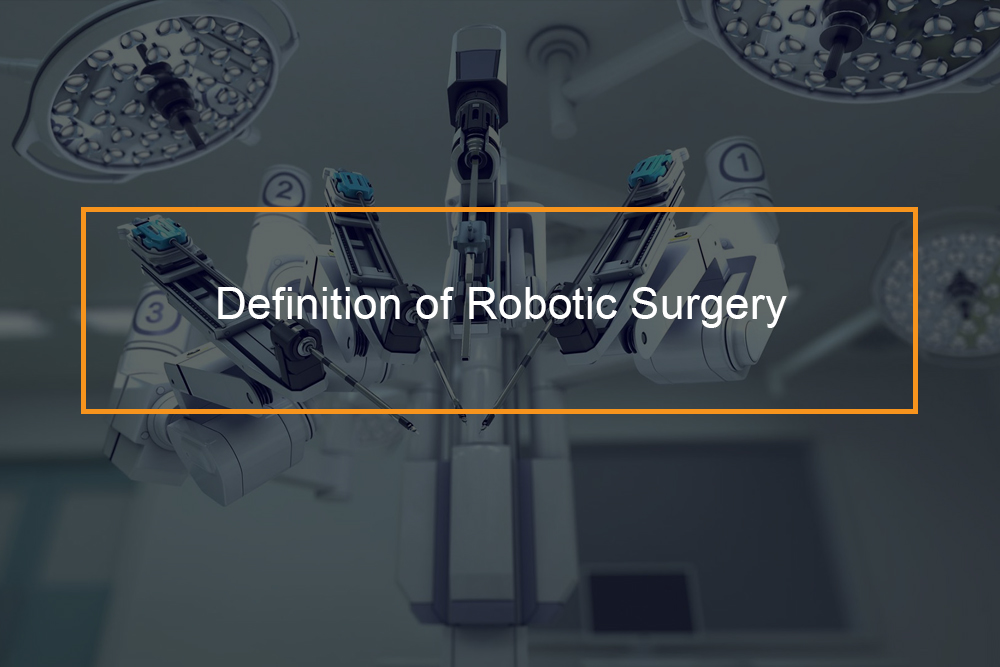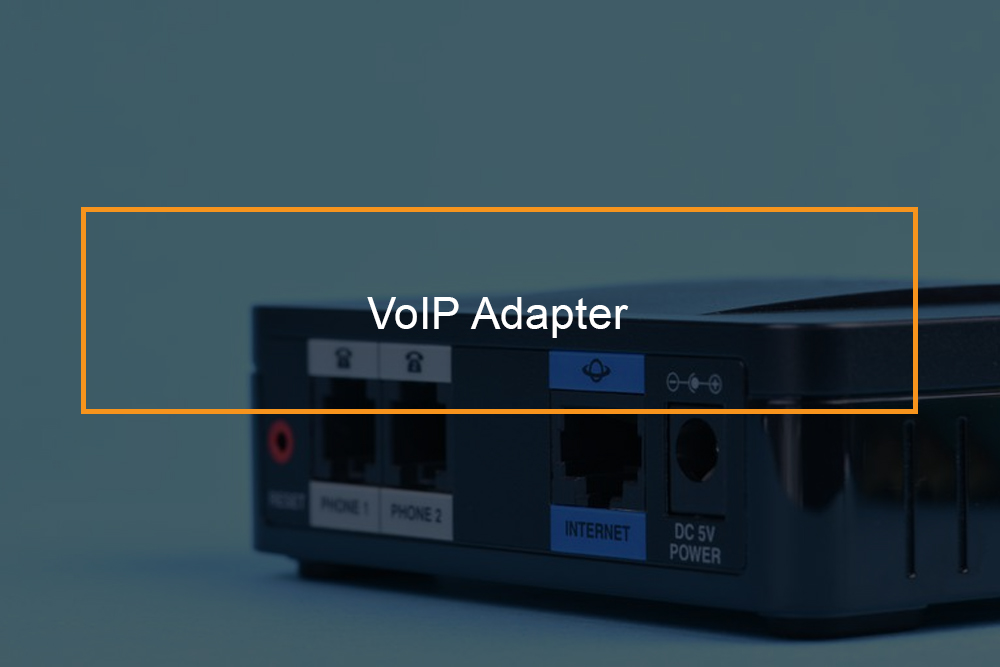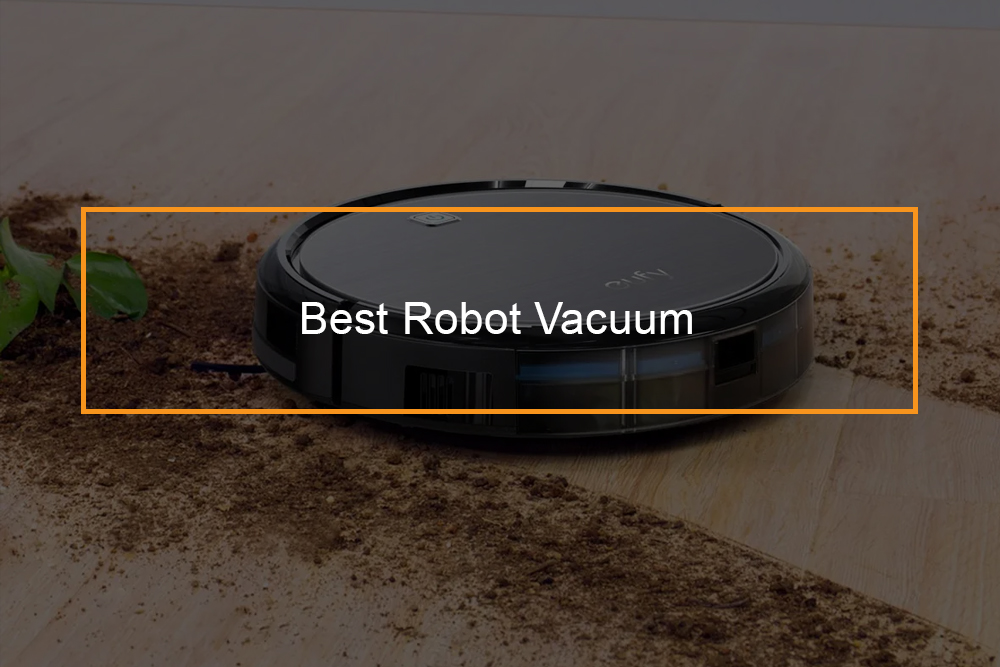
Robotic surgery procedure is a negligibly intrusive medical procedure. What “Negligibly intrusive” implies that as opposed to working on patients through huge entry points, we utilize scaled down careful instruments that fit through a progression of quarter-inch cuts. When performing a medical procedure with the da Vinci Si—the world’s most developed careful robot—these scaled-down instruments are mounted on three separate mechanical arms, permitting the specialist greatest scope of movement and accuracy. The da Vinci’s fourth arm contains an amplified excellent quality 3D camera that manages the specialist amid the strategy.
Robotic surgery is a recent technology that holds significant promise and has seen a milestone in the past years. Without a doubt, Surgical robotics has become a significant advancement in the medical surgery sector.
Is Robotic Surgery Safe?
Is Robotic Surgery Safe For You?
You have to keep these focuses close as you think about robotic surgery:
- Although robotic-aided operations demonstrate some momentary advantages are encompassing the direct perioperative period, it has genuinely comparable long haul results when contrasted with the open medical procedure.
- Robotic surgery is commonly sheltered with low by and large intricacy rates, yet adding the robot to the surgical condition embeds another potential passage point for mistake into an officially unpredictable and hazard loaded field.
- Surgical results are at last an immediate appearance of the expertise and experience of the specialist, not the innovation or approach utilized.
- Potential territories for development and decrease of blunders in mechanical medical procedure incorporate more institutionalized preparing and credentialing rehearsals, enhanced announcing frameworks for automated related unfriendly occasions, and upgraded understanding instruction.
3 Ways of Preventing Complications of Robotic-Aided Surgery
Institutionalized Training and Credentialing
A few associations have gained ground in general standard rules on proper preparing or credentialing for surgery. The American Urological Association has made proposals for preparing and credentialing techniques comprising of specific online educational modules, testing, case stack necessities, and furthermore, suggestions that all doctors finish the da Vinci online robotic security instructional class on set-up, hanging, specific safety qualities, and investigating. Training in robotics is as yet a moderately new sector, and there is certifiably not a substantial proof to help establish a credentialing model or a curriculum. Until all around approved credentialing and preparing models can be produced, healing facilities ought to require an essential mechanical wellbeing educational programs, for example, given by the American Urological Association, for any surgeons utilizing the surgical robot, and require case logs are available or case delegating before conceding automated benefits.
Stricter Reporting Guidelines
Building up a more uniform arrangement of blunder revealing and harder punishments for rebelliousness may help catch a more accurate portrayal of the actual frequency of antagonistic occasions. It is critical to decide the actual occurrence of various difficulties and encompassing conditions. The objective ought to be to recognize key hazard factors for blunders and entanglements with an emphasis on those that are modifiable, which would prompt fewer intricacies.
There should be a more thorough reporting by individual clinics to monitor the actual rate of robotic breakdown. They can hand these institutional reports to the FDA with the goal that repetitive mechanical issues can be all the more effortlessly and quickly perceived and tended to by the maker.
Proper Risk Disclosure to Patients
The possibility of mechanical medical procedure is extremely luring to patients and has impacted the development of apply autonomy in the United States. In any case, it’s demonstrated that men experiencing mechanical prostatectomy were bound to express”dissatisfaction” than men undergoing an open medical procedure, which due to farfetched patient expectations related to the robot. They found that under 70% of patients were adequately directed pre-operatively on the potential dangers explicit to robotic surgery, including conceivable automated glitch or likely change to an open technique. Foundations ought to guarantee proper patient advising, and educated assent for RAS is going on reliably. This following could be practiced by examining trained assent materials and also discontinuous patient meetings.
While RAS has numerous potential advantages for patients and suppliers, the case above plainly shows it also may put patients in danger. National associations and individual foundations ought to guarantee proper preparing and credentialing, correct and helpful mistake revealing, and reliable, educated consent for patients. Discourses about robotic surgery—both with individual patients and at the strategy level—ought to properly adjust the focal points and potential with the genuine dangers and constrained proof of significantly favorable circumstances regarding long haul results.
Types of Robotic Surgery
5 Types of Robotic Surgery
Surgeons utilize robotic surgery procedures for many procedures. Potential advantages of negligibly intrusive robotic medical process over open medical system may a doctor stay for a short while, less post-agent torment, a snappier recuperation, less danger of contamination and less scarring.
Robotic Surgery for Orthopedics
THINK Surgical creates, fabricates and advertises the main dynamic automated careful frameworks for an orthopedic medical procedure. The structures incorporate two segments: a 3D workstation for preoperative arranging and a PC helped apparatus used for exact pit and surface planning for hip and knee substitution medical procedures. The frameworks have been utilized in a great many joint substitutions worldwide since they were first returned to use in 1992.
Robotic Prostate Surgery
The potentially favorable circumstances of laparoscopic and mechanical helped laparoscopic prostatectomy over regular open medical procedure incorporate littler entry points that may result in less post-agent torment, lessened blood misfortune and less requirement for blood transfusions and a conceivably quicker recuperation and come back to regular exercises.
Robotic Gynecologic Surgery
For a few ladies, the automated gynecologic medical procedure might be a decent choice to open medical system or standard laparoscopic strategies. The open medical procedure can cause immense agony, physical injury and a long recuperation process. The potential points of interest of laparoscopic and robot-helped laparoscopic hysterectomy and other gynecologic techniques over regular open medical procedure incorporate littler cuts that may result in less post-agent torment, diminished blood misfortune and less requirement for blood transfusions, and a possibly quicker recuperation and come back to regular exercises.
Robotic Colorectal Surgery
Amid an automated colectomy, surgeons evacuate carcinogenic parts of the colon and rectum, and also mild tumors and polyps. A robot-aided approach furnishes surgeons with the apparatuses to all the more effectively interface the two closures of the colon after the expulsion of the malignancy. The doctors can carry it out with a couple of small cuts, instead of the one long entry point utilized in conventional open colon medical procedure.
The robotic medical procedure enables surgeons to perform complicated rectal malignancy medical procedure, which had been to a significant degree testing, in an insignificantly noticeable way. The robot gives an enhanced representation of the surgical site through 3D amplification, an upgraded ability for control and dismemberment of tissue, and more prominent accuracy.
Robotic Radiosurgery for Tumors
Accuray (NASDAQ: ARAY) out of Silicon Valley got prevalent in 2007. The organization’s lead item is the CyberKnife system, which conveys exact (submillimeter) radiation treatment for individuals experiencing illnesses like prostate malignancy and something many refer to as trigeminal neuralgia, an interminable torment condition that may cause horrifying torment from even gentle incitement of the face. In 2001, the FDA endorsed the gadgets to be utilized for tumor evacuations anyplace on the body.
Advantages and Disadvantages of Robotic Surgery
What Are The Advantages and Disadvantages of Robotic Medical Surgery?
The advantages of an automated medical procedure for the patient are a few, and they include some of the following. The danger of enduring difficulties amid the surgery reduces; the recuperation procedure and the stay in the healing facility occur all the more rapidly, the torment delivered is less, the scars are less unmistakable, and the danger of contamination is littler, similar to the loss of blood.
While Robotic surgery has many advantages it also includes some disadvantages that you need to know.
Advantages OF ROBOT-ASSISTED SURGERY
These frameworks make medical procedures that were, in fact, troublesome or unfeasible already, now conceivable. The gear and frameworks that have mechanical innovation can withstand substantial portions of radiation. The robots don’t encounter exhaustion or tremor so that they can carry out their activity again and again. Manufacturers can add bodycams to the mechanical hardware, with which they acquire accounts of the work completed.
The Robots Enhance Dexterity
These robotic frameworks upgrade aptitude in a few different ways. Instruments with expanded degrees of opportunity enormously improve the specialist’s capacity to control devices and consequently the tissues. The design of these frameworks is in such a way that it can rectify the surgeon’s tremor on the end-effector movement through fitting equipment and programming channels. Moreover, these frameworks can scale developments with the intent that they can change large events of the control grasps into micromotions inside the patient.
There’s Restoration of proper Hand-eye Coordination and an Ergonomic position
These automated frameworks dispense with the support impact, making instrument control more natural. With the specialist sitting at a remote, ergonomically structured workstation, current structures likewise take out the need to wander in cumbersome positions to move the instruments and envision the screen.
These Robotic Assistants Have Improved Vision
The 3-dimensional view with profundity discernment is a stamped enhancement over the conventional laparoscopic camera sees. Additionally further bolstering one’s advantage is the specialist’s capacity to straightforwardly control a stable visual field with expanded amplification and mobility. The majority of this makes pictures with expanded goals that, joined with the extended degrees of opportunity and upgraded aptitude, significantly improves the specialist’s capacity to distinguish and dismember anatomic structures.
Major Disadvantages OF ROBOT-ASSISTED SURGERY
There are a few impediments to these frameworks.
Lack of Clear Uses
An automated medical procedure is another innovation, and its uses and viability are not yet apparent. To date, for the most part, investigations of attainability have been directed, and no long haul follow up studies have been performed. Numerous strategies will likewise be upgraded to streamline the utilization of mechanical arms and increment proficiency.
Cost of Robotic Equipment
With a sticker price of a million dollars, their fee is about restrictive. Regardless of whether the cost of these frameworks will fall or rise involves guess. Some trust that with upgrades in innovation and as more experience is picked up with automated frameworks, the cost will drop. Others trust that updates in change, for example, haptics, expanded processor rates, and more mind-boggling and skilled programming will build the expense of these frameworks. Additionally at issue is the issue of redesigning structures; what amount of will doctor’s facilities and medical services associations need to spend on overhauls and how frequently? Regardless, many believe that to legitimize the buy of these frameworks they should increase far-reaching multidisciplinary utilize.
Limited Life Span of These Frameworks
The two structures generally have huge impressions and moderately lumbering mechanical arms. It is a significant impediment in the present officially swarmed working rooms. It might be troublesome for both the surgeons and the robot to fit into the working room. Some recommend that scaling down the mechanical arms and instruments will address the issues related to their present size. Others trust that bigger working suites with various blasts and divider mountings will be expected to oblige the additional room prerequisites of careful mechanical frameworks. The expense of accounting for these robots and the expense of the robots themselves make them a particularly costly innovation.
There’s an Absence of Proper Instruments and Hardware
A lack of specific tools expands dependence on tableside collaborators on performing some portion of the medical procedure. It is in any case, is a transient burden because new advances have and will create to address these inadequacies.
The majority of the inconveniences distinguished will be cured with time and upgrades in innovation. The truth will surface eventually if the utilization of these frameworks legitimizes their expense. In case the cost of these frameworks stays high and they don’t diminish the liability of routine techniques, it is far-fetched that there will be a robot in each working room and subsequently far-fetched that they will be part of routine medical procedures
Robotic Surgery History
Robotic Surgery HIstory and It’s Development
The present robots are intelligent machines, and extraordinary steps have in play to extend their utility. Today robots are utilized to perform very explicit, profoundly exact, and risky errands in industry and research already impractical with a human work drive. Robots are routinely used to fabricate chips utilized in PCs, investigate the remote ocean, and work in dangerous conditions to give some examples. Incorporation of robotics into the sector of medicine has been somewhat slow.
The absence of transition between industrial robotics and especially curative surgery is at an end. Careful robots have entered the field in power. Automated telesurgical machines have just been utilized to perform cross-country cholecystectomy. Voice-initiated mechanical arms routinely move endoscopic cameras, and complex ace slave automated frameworks are right now FDA endorsed, promoted, and used for an assortment of techniques.
The negligibly intrusive medical procedure started in 1987 with the first laparoscopic cholecystectomy. From that point forward, the rundown of methods performed laparoscopically has developed at a pace reliable with upgrades in innovation and the specialized aptitude of surgeons.
Moving the laparoscopic instruments while viewing a 2-dimensional video screen is to some degree irrational. One must control the tool the other way from the ideal focus on the screen to interface with the site of intrigue. Therefore you’ll have to compromise on dexterity. Some allude to this as the support effect.9 Current instruments have confined degrees of movement; most have 4 degrees of motion, though the human wrist and hand have 7 degrees of movement. There is likewise a diminished feeling of touch that makes tissue control all the more intensely reliant on perception.
From their beginning, careful robots have been imagined to expand the abilities of human surgeons past the breaking points of conventional laparoscopy. The historical backdrop of mechanical autonomy in medical procedure starts with the Puma 560, a robot utilized in 1985 by Kwoh et al. to perform neurosurgical biopsies with more remarkable precision.6,11 Three years after the fact, Davies et al. played out a transurethral resection of the prostate utilizing the Puma 560.12 This framework, in the long run, prompted the advancement of PROBOT, a robot planned explicitly for transurethral resection of the prostate. During the inception of PROBOT, Integrated Surgical Supplies Ltd. of Sacramento, CA, was building ROBODOC, an automated framework intended to machine the femur with more noteworthy exactness in hip substitution surgeries.1 ROBODOC was the first careful robot endorsed by the FDA.
Additionally, in the mid-to-late 1980s, a gathering of surgeons at the National Air and Space Administration (NASA) Ames Research Center taking a shot at augmented reality wound up keen on utilizing this data to create telepresence surgery. This idea of telesurgery ended up one of the principle main thrusts behind the improvement of surgical robots. In the mid-1990s, a few of the researchers from the NASA-Ames group joined the Stanford Research Institute (SRI). Working with SRI’s different roboticists and augmented reality surgeons, these researchers built up a handy telemanipulator for hand medical procedure. One of their fundamental plan objectives was to give the surgeon the feeling of working straightforwardly on the patient as opposed to from over the room.
The US Army saw crafted by SRI, and it ended up keen on the likelihood of diminishing wartime mortality by “conveying the surgeon to the injured trooper—through telepresence.” With subsidizing from the US Army, there came a technology whereby an injured fighter could be stacked into a vehicle with surgical robots and be worked on remotely by a surgeon at an adjacent Mobile Advanced Surgical Hospital (MASH).
Mechanical Surgery Today
The da Vinci and Zeus frameworks are comparable in their abilities however extraordinary in their ways to deal with an automated medical procedure. The two structures are complete ace slave careful robots with various arms worked remotely from comfort with video helped representation and PC improvement. In the da Vinci framework, which advanced from the telepresence machines produced for NASA and the US Army, there are basically 3 segments: a dream truck that holds a double light source and dual 3-chip cameras, an ace support where the working surgeon sits, and a moveable cart, where 2 instrument arms and the camera arm are mounted. The camera arm contains dual cameras and the picture created is 3-dimensional. The ace support comprises of an image handling PC that produces a genuine 3-dimensional view with a profundity of field; the camera where the surgeon sees the picture; foot pedals to control electrocautery, camera center, instrument/camera arm grasps, and ace control holds that drive the hireling mechanical arms at the patient’s side. The tools are link driven and give 7 degrees of opportunity. This framework shows its 3-dimensional picture over the hands of the surgeon with the goal that it provides the surgeon with the deception that the tips of the instruments are an expansion of the control grasps, accordingly giving the impression of being at the particular site.
The Future Fate of Robotic Surgery
Other innovative advances could empower robots to really upset medical procedure later on. Analysts imagine blending apply autonomy with computerized reasoning, augmented simulation and gadgetry that enables machines to be controlled remotely by mind waves. The working room of things to come might be a VR recreation of within a patient’s body, in which surgeons can see through tissue and control careful robots with their psyches while working nearby different self-ruling mechanical colleagues. Surgeons will even have the capacity to increase the 3-D condition with information from different sweeps or medicinal tests, so they’ll see the delicate tissue inside a kidney as green.
Analysts are additionally creating small, careful robots-nanobots-that may sometimes, or another wander inside the body alone. Others imagine robots with original structures, for example, an adaptable snake robot that would creep inside a particular entry point and crawl into spots where human hands or conventional apparatuses couldn’t reach. We’ve made some fantastic progress from phlebotomy. However, there will dependably be space for advancement.









